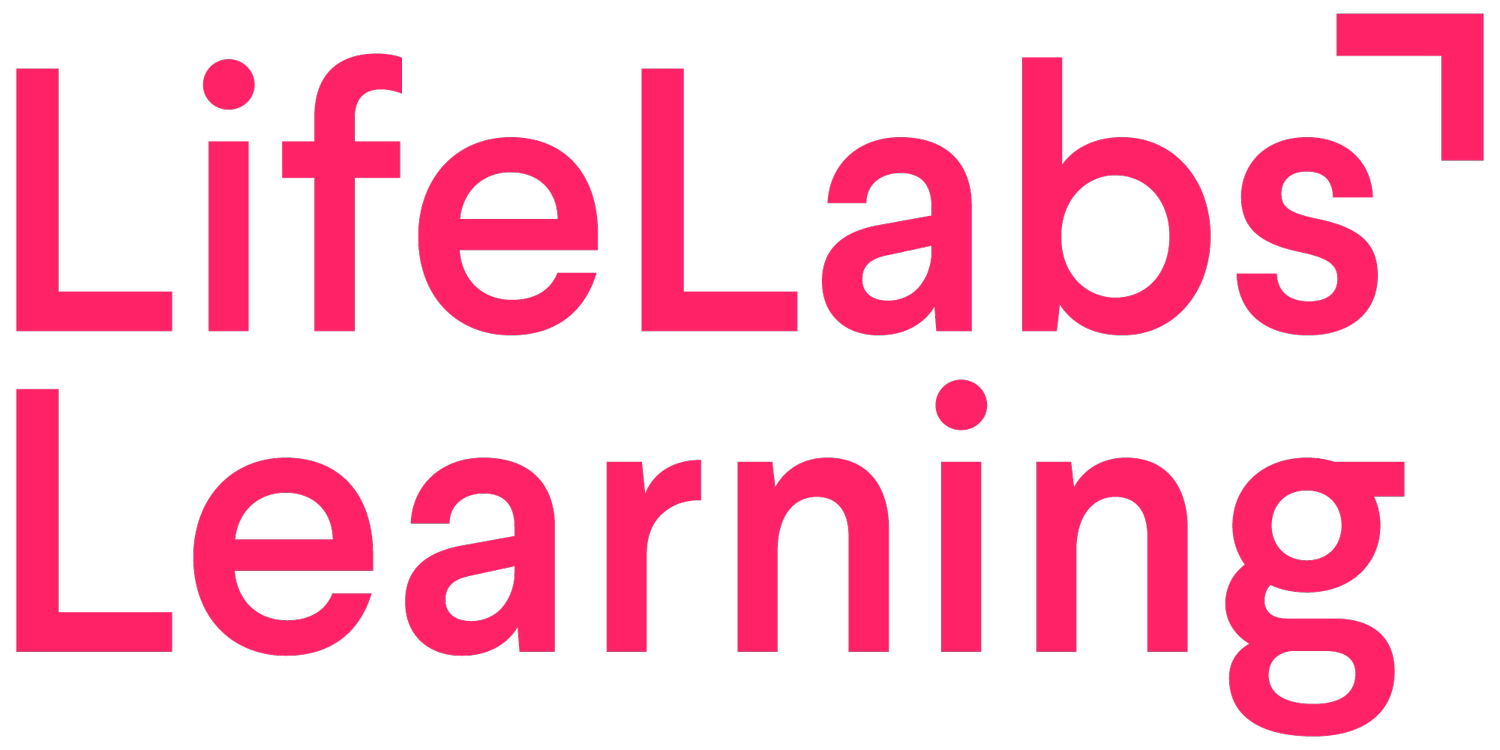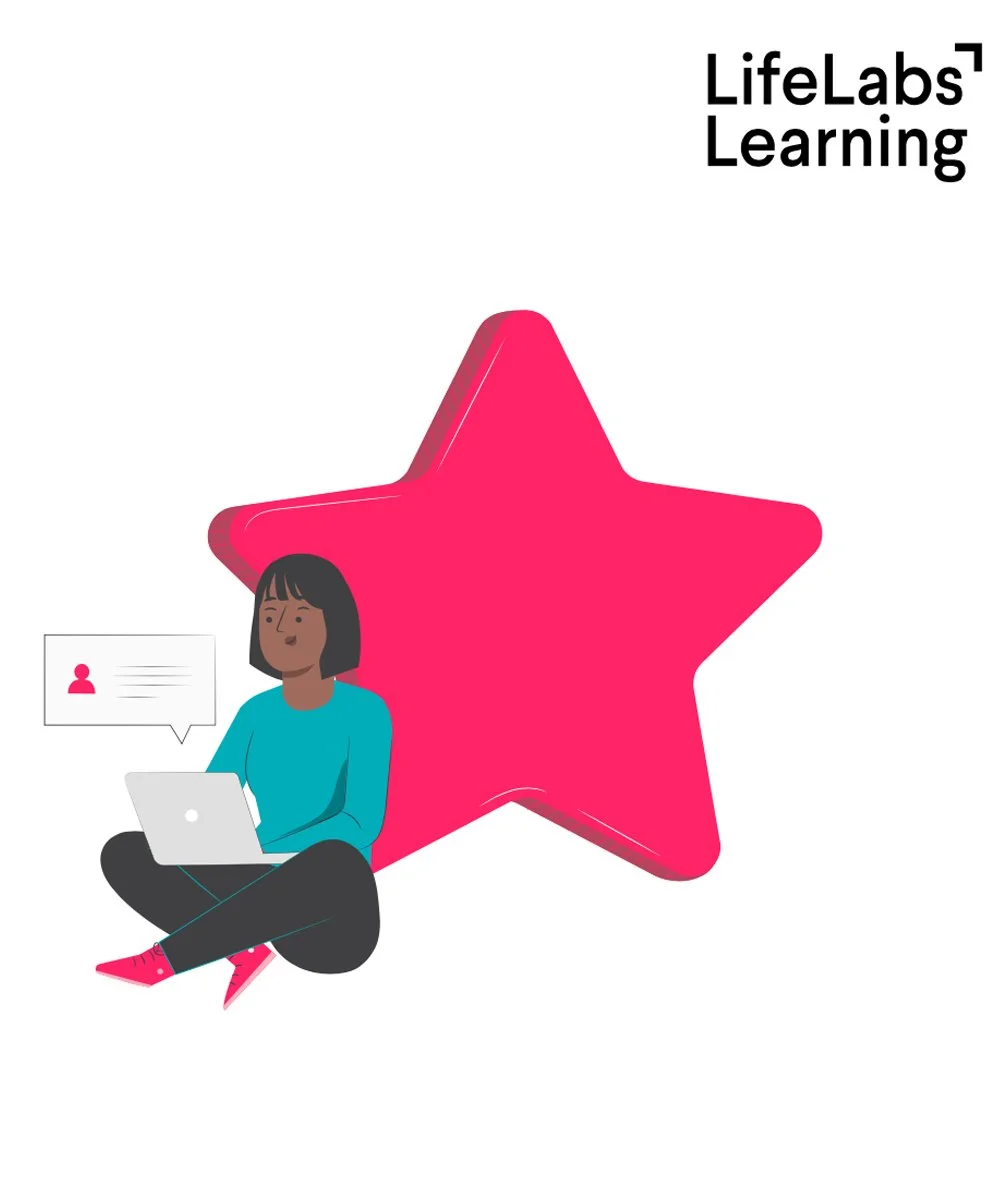The rise of feedback: Why feedback skills have become urgent
9-minute read
Humans have grappled with feedback for a long time now. As far back as 500 BC, Confucius spoke of the importance of delivering a difficult message well. And yet, there is an ever-growing interest in feedback skills. It has been our most-booked workshop at LifeLabs Learning for 5 years in a row. Why is that?
The answer has to do with the rapidly changing nature of work. This change has happened so fast that we now find ourselves smack dab in the heart of the Learning Era, armed with no more than Industrial Era feedback skills. It's the equivalent of being stranded in the middle of the Autobahn, driving a horse-drawn carriage.
To thrive in the modern workplace, we must have solid feedback skills. But there is something else essential that so many of us are missing - a new feedback mindset.
So let's get into it. What is feedback? Why does it matter now more than ever? And how do we finally get good at it?
Just what is feedback, anyway?
In our book, The Leader Lab, we define feedback as information that helps us adjust (or maintain) our behavior so that we can get what we want.
For a visceral example of feedback, imagine wandering around in the dark in an unfamiliar hotel room to find your bed. At first, you feel totally lost. Why? There is no visual or physical feedback. There are no cues helping you understand how close you are to your destination. You feel vulnerable, disoriented, a little nervous. Then BANG (perhaps even CRUNCH), your toes collide with the bed frame, and you suddenly know exactly where you are. The bed has given you feedback.
Why is feedback increasingly important?
In the workplace, we often wander around in the dark in much the same way, wondering if we are heading in the right direction, unsure how the steps we take will impact others and even ourselves.
In the Industrial and Knowledge Eras, beyond an onboarding period, human-cued feedback was not essential for high performance because environment-cued feedback was readily available.
When I think Industrial Era, I think conveyor belts, and when I think conveyor belts, I think of that episode of I Love Lucy where Lucy works at a chocolate factory. As the conveyor belt speeds up, she has to work faster. Of course, chaos ensues, a lot of chocolate is eaten, and a lot of chocolate is lost. And here's the thing, Lucy's boss doesn't have to give her feedback. The environment already did a great job of that. Lucy received all the physical cues she needed to recognize the "gaps" in her performance.
Even as we progressed into the relative complexity of the Knowledge Era, feedback was still largely environment-cued. Either you memorized information correctly or you didn't. A paper test could tell you how well you were doing.
My sincere apologies to both eras for the oversimplification, but here is where the contrast becomes important. In a growing number of industries and work environments today, four things are happening:
1. Decisions are incredibly complex, with no clearly visible right or wrong answer. A study by Gartner discovered that 65% of decisions made today are more complicated than they were two years ago, involving more people or choices. The environment is no longer sufficient to provide us with the feedback we need to make rapid adjustments.
2. Access to information is distributed, meaning the source of truth no longer lives with one person. Organizations have to function more like organisms, pulling in data, sharing it, and applying it at once independently and in alignment. Without human-cued feedback, everyone either sits and awaits instruction or pulls in hundreds of disorganized directions.
3. Change is happening exponentially, meaning we don't have the luxury to learn something once and then apply those skills and knowledge indefinitely. We have to learn and unlearn faster, which means we need shorter feedback loops.
4. We are working more collaboratively than ever before, meaning that one of the key pieces of learning we have to do very well and very quickly is learning how to work well together. The only way this type of learning happens is through human-cued feedback. Research shows that 73% of people believe they collaborate better after giving and receiving feedback at work.
And:
4.5. We can't learn how to work well together just once. As team membership changes faster and teams grow in diversity, we have to keep adjusting to new people and new teams again (and again) very (very) quickly. Humans quite simply need human-cued feedback to work better with humans.
So, what is the current state of feedback?
At LifeLabs Learning, we train over 80,000 managers, execs, and teams each year at hundreds of companies around the world. This exposure gives us a front-row seat to how people are handling feedback at work. And... It's not a pretty picture.
Let's return to the analogy of stumbling around in the dark in search of your bed. Only now, imagine there are dozens of people in the room with you, wearing night vision goggles and not saying anything (except for maybe occasionally complaining about you to someone else). You can't see them, of course, but even if you could, they would ever-so-politely neutralize their facial expressions, making it impossible for you to guess what they think of you or your valiant bed-seeking efforts.
Why do they stay silent as you stumble around awkwardly, perhaps even trampling over their toes in the process?
They simply don't know how to tell you.
They don't want to hurt your feelings.
They're not sure it's their place to say something.
They second-guess themselves, thinking their feedback might not be valid.
The result? You waste a lot of time wandering. And sooner or later, you hear that awful CRUNCH and feel the searing pain of colliding with a solid object or perhaps even a human. That's still feedback, but by then, it hurts really badly and is much harder to learn from.
In the workplace, the equivalent we see every day is people getting fired because of a problem they didn't know about until it was too late, people quitting because no one fixed a problem that no one knew existed, disappointed clients, lost businesses, and, in extreme cases, serious accidents that could have been prevented through a simple exchange of feedback.
How do we start giving feedback?
At LifeLabs Learning, we are great at eliminating obstacle 1 of 4 listed above - equipping people with skills to deliver feedback well. This is a critical piece of the puzzle because it builds confidence and ensures the message lands well, allowing rapid learning to happen. When people have positive feedback experiences, the cycle is reinforced until it becomes habitual.
But where we need a lot more help is in addressing obstacles 2 through 4: the right feedback mindset. We need to do it together. We need to do it fast. And it's going to take a global paradigm shift. It starts with doing an Industrial Era and Knowledge Era detox and embracing the Learning Era. Let's take another look at obstacles 2 through 4 and consider the underlying beliefs that underpin them and how to challenge these maladaptive assumptions.
Feedback obstacle: "I don't want to hurt your feelings."
Solution: Reframe feedback as respect.
This belief is a vestige of the Knowledge Era where being right was the ultimate marker of success. Through this lens, someone telling you that you messed up meant you were underperforming. But, to quote psychologist Carol Dweck, we no longer need to be know-it-alls. We need to become learn-it-alls, infinitely adapting and adjusting to new information, environments, and people. Learning is no longer the mark of a novice. It is a life-long practice. If we accept this new premise, every piece of feedback delivered becomes a message of respect and care.
And by the way, even if feelings are occasionally hurt, so what? Is that really more dangerous than letting someone fail? And if it feels uncomfortable, so what? Would you rather have an awkward moment of someone telling you that you have spinach in your teeth or do you want to end the day realizing you've had a green tooth all day and no one said a thing? Most importantly, if you want to prioritize the relationship, reflect on what it takes to build a true relationship with others. Relationships are built on genuine care and trust - not on an assumption of fragility.
So, what can you do to help make a shift in our cultural norms? Become a feedback puller. Don't let people suffer in silence, wondering whether and how to give you feedback. Ask for it often and thank people profusely when you get it.
Feedback obstacle: "I'm not sure it's my place to say something."
Solution: Just say yes.
This is one of the biggest obstacles we see employees face today, and it's a relatively easy one to overcome. Just say yes.
YES, it is your place to give feedback to your direct reports. In fact, our most successful clients write this expectation into manager standards and job descriptions.
YES, it is your place to give feedback to your peers. We are all in this together. And we often see one another's work more often and more closely than supervisors or clients. Go ahead and add this expectation to job descriptions and core competencies as well.
YES, it is your place to give feedback to your manager. The companies that do this best put systems in place to make it easier (e.g., 180 surveys and 1-1 templates with prompts to exchange feedback).
YES, it is your place to pull for feedback.
Managers, leaders, and People Ops professionals, you can do your part by setting expectations with employees about feedback-sharing norms. And as an individual, do your part by simply kick-starting this conversation with every collaborator. Start by asking: “How should we give each other feedback?”
Feedback obstacle: "I'm not sure if my feedback is valid."
Solution: Treat feedback as a hypothesis.
This is a totally legitimate concern. Maybe your perception is wrong. They might know something you don't know. Or maybe you really are being too sensitive and your reaction has more to do with you than them. Share the feedback anyway.
Feedback is not meant to be a mandate. It works best as a hypothesis that you explore and test together in a shared search for truth. A lack of certainty actually helps! If your hypothesis is wrong, you learn something. If your hypothesis is right, they learn something. Worst case scenario, they don't use your feedback, and you've wasted a few sentences of your infinite sentence supply.
Still feeling unsure? Advertise your uncertainty! For example, you might say: "I have feedback to share with you, but it may be totally wrong/unfair/uninformed. I think I should share it anyway because it might help us/you/me. Would you be open to hearing it?"
More often than not, if you choose courage over comfort (a core LifeLabs value!) and share your feedback, the conversation will go surprisingly well. But every once in a while, it won't. That's okay too. We're all still learning, as individuals and as an increasingly interconnected and feedback-dependent society, to get this right. We are still working to show up to the Learning Era with a new set of skills and a reconfigured mindset. With every piece of feedback you share, encourage, or request, you are doing your part to help us get there.
Feedback Prep Grid
The LifeLabs Learning Guide
We're sharing our Feedback Prep Grid for an easy-to-reference guide on making feedback receivable, actionable, and high-value.

